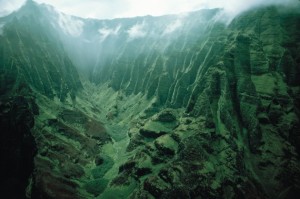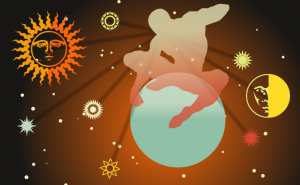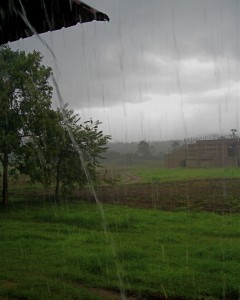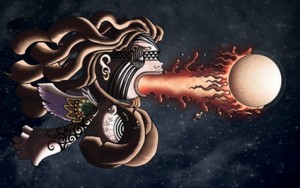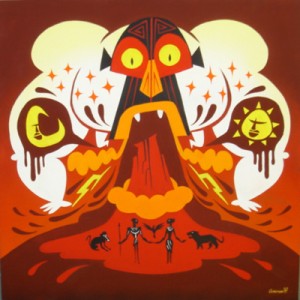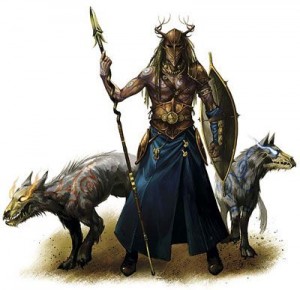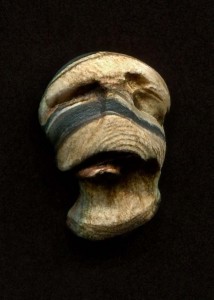The Fantasy Genre has long been dominated by the religions and customs of countries touched on by the Crusades. While this makes sense, with the familiar image of a knight wandering foreign lands being key to the genre itself, there has been stagnation in recent times. As such, I’ve taken it upon myself to look into the cultures of the world and find fascinating details about other mythologies often overlooked by the genre we so love, going on a bit of a tour of world mythologies.
As I continue my little academic journey to learn of new mythologies and find new material around the world, we finally leave the West African region and enter a region where nature has firmly established its dominance – The Congo.
Named for the massive river that runs through it (deepest in the world), the Congo River Basin is one of the three true “rulers” of the African Continent. Along with the Sahara and Kalahari deserts, the lush jungles and wetlands of the Congo region dominate a considerable chunk of land and, to this day, it is one of the largest undisturbed rainforests on the planet. And yet, despite the fact the jungle has clear control of the region, several cultures formed within these lands, each carving a path for themselves and establishing their own unique worldviews.
And all of those have to start somewhere…
Creation Myths of the Congo
Despite the fact the Congo Basin is a relatively untamed region, four notable cultures made a home for themselves in this place. Originally the Basin was populated primarily by the people who came to be known as the “African Pygmies” due to their short stature. These peoples were actually a wide variety of smaller subgroups which lived by each other for millennia before other cultures began to migrate into the region from the surrounding areas. The cultural differences between them was profound, with some being agriculturally based and others being nomads, but much of their culture has since assimilated to the lifestyles of neighboring people, primarily the Bantu who migrated into the Congo Basin.
However, while a great deal of influence reached the area from outside, the region still maintains an identity of its own and some marks of unified culture exist in the region. Much like how many of the West African religions had some marks of influencing each other, the people of the Congo Basin share some details with each other and with nearby regions.
In fact, as I was first researching cultures for the idea of Alternative Mythologies, I read an article where someone described African cultures as being the cultures where many believed in a single god but also believed that god wanted nothing to do with them. That trait existed heavily in West Africa, with many cultures describing their god as “unknowable”. But the idea that the god was actively disassociating itself from the people was fairly unique to Abassi and the Efik in the west. However, in Central Africa, that changes as we meet…
Kabezya-Mpungu
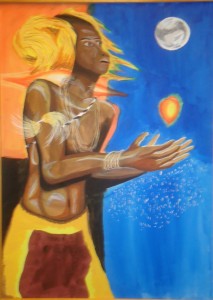
The Baluba people, like many cultures in West Africa, also believe that god is unseen and unknowable. However, unlike many of them, their belief is that god left willingly. Kabezya-Mpungu, the great creator god, was said to have created the heavens and the earth and a human couple who were intelligent but lacked, for all intents and purposes, a soul. His creations were not immediately perfect, especially his four children: the Sun, Moon, Darkness, and Rain.
When they first entered the world, the children of Kabezya-Mpungu were out of balance and uncontrolled. Each of them had a desire to run wild and do as they wished without having to answer to anything else. But with each of them, Kabezya-Mpungu pleaded for them to see reason and find balance with each other. Rain wished to create endless downpours and a deluge that would flood the land. Kabezya-Mpungu, gesturing to the living creatures he had created, reasoned with Rain that the people and animals could not live under water. Instead, Rain should share the sky with Sun and allow there to be a balance between the rain and the sun.
Mind you, the Congo, being a region with one of the largest rainforests, sees a lot of rain. So to say that it could have been worse without Kabezya-Mpungu puts a lot of things into perspective. Flooding is and was something that would always be on their minds.
However, when going to Sun, Kabezya-Mpungu found that the other child was just as unreasonable. Sun wanted to shine down mercilessly and burn everything on the Earth. Once again, Kabezya-Mpungu had to reason with his child and point out that nothing could live in such conditions (I mean, hell, look at the Sahara). Sun relented, agreeing to warm the world for a time before letting Rain refresh it once again.
Then, Kabezya-Mpungu turned to his child Darkness, who wished to cloak everything from view. As a compromise with this child, Kabezya-Mpungu requested that Darkness share the night sky with Moon and that each of them would get a turn to rule over the night. With this balance, Darkness could have time to rule but the beasts of the night could still have time to see.
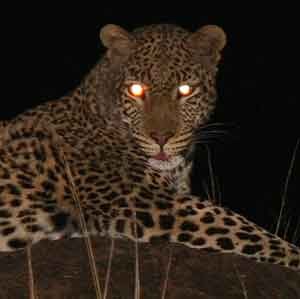
With this completed, Kabezya-Mpungu decided it was time to leave behind the world of Man and let them live without him. But before leaving he left behind a memento, something which could guide them on their path and make them aware of the world beyond. So, as he left, Kabezya-Mpungu gave the people a heart, Mutima, which would guide them and give them a longing to meet God once again.
Mbombo
Not very far away, the Bushongo people believed in another deity which had to put in effort to make the world complete before leaving it behind. Mbombo, or Bumba, was their creator deity – a lone entity in the vastness of darkness and water. Eventually, Mbombo felt an intense pain in his stomach and suddenly vomited the sun, moon and the stars in what has got to be the worst after-party surprise in the history of everything.
As these lights entered the sky and shone down on the world, they began to slowly evaporate the water and lower the seas. Clouds soon rose from them and the land soon emerged, creating the world we know today. And, in response to this, Mbombo did what anyone with this kind of shock would do and… threw up again.
It was then that life literally spewed from Mbombo’s body and entered the world as nine sacred animals which originated all other animals. Among these was Tsetse Bumba, the white heron, which would give rise to all birds but the kite before becoming destructive on the Earth. Mbombo saw this and chased the sacred animal into the skies, where the mystical heron became lightning and would occasionally make itself known to the mortals again with great thunder. However, with the white heron gone, the source of fire and light humans had at night went with it. So Mbombo sent them one last gift to let them survive in the world – he taught them the secrets of fire.
Once this creation was complete, like Kabezya-Mpungu, Mbombo left mankind to care for themselves, leaving several of the first humans to exist as gods among men in his place – including the first king of the Bushongo people.
However, not all creator gods of the religions in this region would do the same, some would continue to return to the people in one form or another, and among those was…
Adroa
Adroa, of the Lugbara people, while the typical creator deity, was not typical in his way of dealing with the people. Having created the universe (and himself), he turned his attentions towards one final project – the Earth. Being a god of duality, he was conflicted about the work he had done and about his won nature. Even physically, Adroa was divided down the middle, with one half of his body being dark, small, and appearing to be on the verge of death – somewhat like Hel from the Norse far, far away. The other half of his body, the one most often mentioned in descriptions, was tall and an ivory white color.
Giving rise to many children, Adroa filled the world with many lesser gods, the Adroanzi, who would care for mankind in his place. These spirits would shape the world for Adroa and maintain peace in the world as protective spirits, following the locals through the wilderness at night and guarding over them provided the people never looked back and tried to see them. With these spirits in place, the world was good, but Adroa did not quite feel the same.
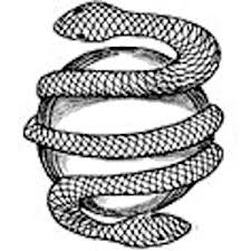
Split down the middle in body and mind, Adroa wished to purge the darkness from his heart and remove the conflict within him. Splitting himself down the middle, his two halves became separate entities. Each of these would have a single arm, leg, eye, and ear – everything being split in half and shared equally except for the genitals which they went without. But as he did this and separated himself, the good half of Adroa, like the other gods of the region, ascended into the heavens to leave mankind behind. His dark half, now known as Adro (also the Lugbara name for Earth), remained among the living to deal in Earthly matters, now completely unchecked.

This half, filled with all of the darkness of Adroa’s soul, is seen by those on the verge of death, visiting them as they are about to pass. Much shorter than his good half, he is small, coal black and sickly in most descriptions – once again bearing a visage of death. And, while he’s busy dealing with the lives of the mortals, his good half is nowhere to be seen. In fact, no one’s quite sure what Adroa does now that he’s separated himself from Adro.
In fact, of the creator gods common in the region, one of the few that actually does stick around is the god of the Bambuti/Mbuti…
Khonvoum
To the Mbuti people, Khonvoum is the greatest and most important of gods, not only the god of creation but of the hunt and the one responsible for restoring the world each day. He carries a bow made of two great snakes, which appear in the sky as the rainbow for the people below, and each day carries out the task of renewing the heavens. As the sun sets he begins to capture the stars and gather their light together, assembling them so that they may be sent to the sun to restore it once again and give it the strength it needs to rise the next day.
Khonvoum was also responsible for the creation of the humans as well and the animals which they hunt. It is the belief of the Mbuti that he gathered together clay, much like he does with the stars each night, and used it to craft the various peoples of the world. To create black people he used black clay and to create white people he used white clay. But for the Mbuti, Khonvoum used red clay. In these clay figures a soul, called the megbe, was introduced to the clay figures and gave them life while bonding them to the rest of the world – specifically to a totem animal which they would be bound to in their lifetimes.
However, several aspects of Khonvoum are sometimes attributed to others. The creation of man from clan is often also attributed to the god of the sky, Arebati, who appears to the people as the moon. Meanwhile, the creation of animals and god of the hunt is sometimes attributed to Tore – the god of the forests, thunder, and death. With Tore, we see more of the way the world came to be, with fire being stolen from him by the earliest of peoples and causing him to not be there for his mother as she died. In his grief, Tore also became the god of death, swearing that humanity would suffer the same fate as his mother for the rest of time.
Upon death, it’s believed the soul will begin to escape the body and that it must have a place to go. Seeing that their gods are deeply connected to nature, one of these destinations is the totem animal of the recently departed. A fragment of the soul will go to these animals and roam the world in their new container. Meanwhile, the remainder must be inhaled by the son, breathing it in through the mouth to ensure it does not escape. Should either of these parts have nowhere to go, either by lack of a son or the death of the totem animal, the spirit would then escape into the forests – “living” eternally as a phantom in the forests and staying with Tore in caves.
Each of these religions, sharing a region, come to their view of the world from very different perspectives. Over time, they’ve blended more and more as people coexist in the spaces that they can. And, as a result, some details beyond this can get lost. But, despite this gradual assimilation and cross of influences, I think it’s pretty clear that each of them has a unique culture, rich and full of energy, and frankly…
It’s still pretty awesome.
(I write novels. Sorry this entry is late today, I’ve had weather problems and took the weekend off. But you would have known that if you followed my twitter account.)



